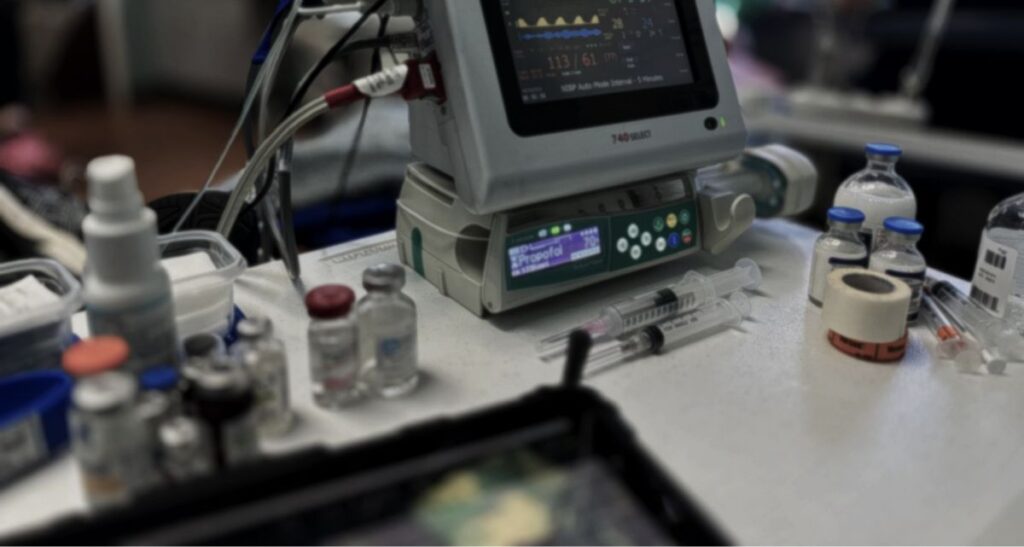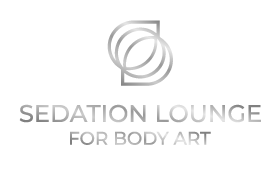Hey there tattoo enthusiasts! Ever wondered what goes on before and after a tattoo session with anesthesia? At Sedation Lounge for Body Art, we focus on making the tattoo experience as comfortable and pain-free as possible with a tailored IV sedation approach.

Here’s a bit of behind-the-scenes information with additional commentary from Certified Registered Nurse Anesthetists (CRNAs) Dwayne and Rudy:
Understanding IV Sedation
IV sedation is utilized and tailored to specific needs. Expert CRNAs administer a customized blend of medications via IV, swiftly inducing a relaxed, dream-like state. This ensures a pain-free tattoo session from start to finish.
Dwayne explains, “Clients benefit from reduced session numbers and enhanced comfort during complex tattoo projects, as anesthesia helps manage pain and inflammation effectively.”
Before Getting Started
Clients will receive a phone call a few weeks prior to the tattoo session to discuss their medical history, medications, and allergies. The morning of the session, this medical history is reviewed with the client a second time to check for any recent changes and make sure the information is up to date. The client’s medical history has an influence on how the team will provide anesthesia and the process. For example, what types of medications they should use, what medications they should not, etc.
Dwayne: “If the client and patient is honest with us and does what we ask them to do and follows the rules that we set forth for them. Anesthesia is pretty safe.”
It is very important that clients arrange for an adult – yes, an adult, not a teenager with a driver’s permit – to stay during the tattoo session. That way, someone is there to drive them home and stay with them that night.
No food after midnight the night before the session. Clients may have 8oz of Gatorade, Pedialyte, or water up to 2 hours before the tattoo session, but NOT during the two hours right before. This includes chewing gum, candy, or mints that create saliva for swallowing. If instructed to take morning medications, take them at least two hours prior to the office visit. This is a safety concern.
Post-Sedation Care and Benefits
Upon awakening from sedation, there will be minimal to no discomfort and no recollection of the tattooing process. During the tattoo session, medications were administered through the IV to manage pain, reduce inflammation, and prevent nausea. Information on when the client may take additional ibuprofen and Tylenol are provided with the post-session instructions.
Clients will remain with the CRNA until they are adequately alert and drinking either water or juice. Within 30 to 60 minutes post-wakeup, clients will be ready to head home accompanied by an adult.
Rudy emphasizes, “Our priority is always our clients’ well-being.”
Recovery Instructions
We will provide clients with detailed discharge instructions that will guide recovery, emphasizing rest and hydration.
Absolutely NO driving, drinking alcohol, signing important documents, or operating any dangerous machinery for 12-24 hours after the tattoo session. Clients should also avoid using sharp objects, signing legal documents, or making crucial decisions for up to 24 hours post-sedation due to potential impaired judgment.
Follow-Up Care
Expect a follow-up call later in the day from the CRNA to ensure recovery progresses smoothly. They will address any questions and provide additional guidance as needed.
Learn More
At Sedation Lounge for Body Art, safety and comfort are paramount. For detailed information about our anesthesia services, visit the FAQ page or contact us directly.
Trust us to enhance the tattoo experience with expert anesthesia care. Book a session today and discover the difference at Sedation Lounge.



